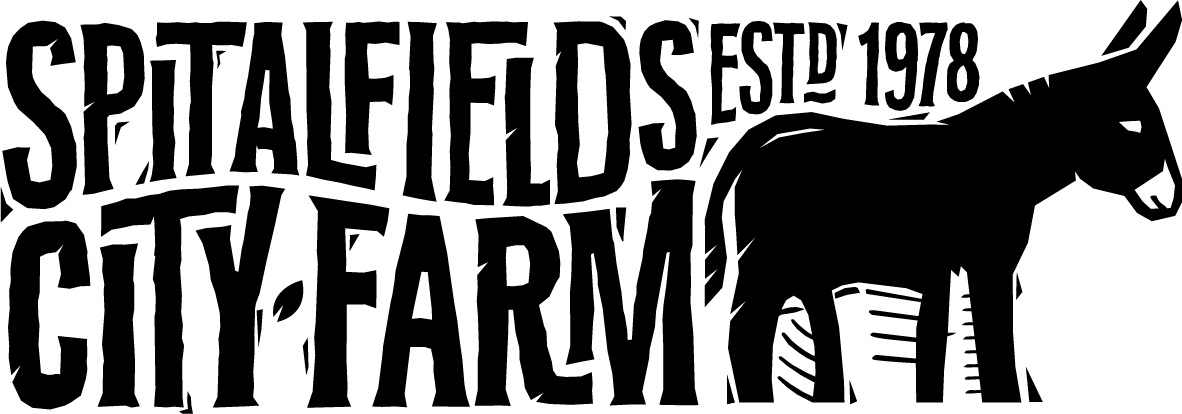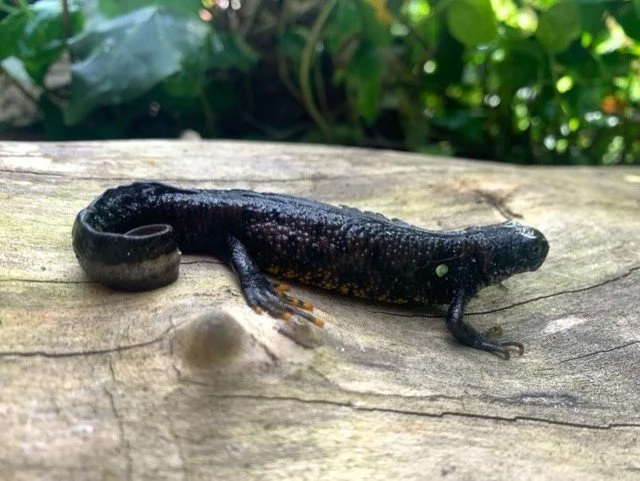wildlife at the farm
As well as our farmyard animals and resident mousing cat, the Farm is also home to so much wildlife, with some species here being rare and protected.
Tucked away on the left as you enter the farmyard is the Wildlife Garden. Abundant with native flora and fauna, this small miniature woodland is home to our colony of rescued honeybees, which not only produce delicious honey under the careful guidance of volunteer beekeeper Salvatore, but also have an invaluable role as pollinators across the Farm and beyond. In this area we have also observed azure damselflies, small red damselflies, large red damselflies, Buff tailed bumblebees, common bumblebees, hoverflies, common blue butterflies, and plentiful peacock butterflies.
To further promote biodiversity, we have dug out a series of ponds in this area, which are the main breeding habitats for our resident protected Great Crested Newts, Smooth Newts, and Palmate Newts, as well as the common frog, and many invertebrates like dragonflies, pond skaters, beetles and snails. Great Crested Newts have been on Earth for around 40 million years, and during that span of time they have suffered from a variety of human impact including loss of habitat, pollution, disease threat and climate change. We are extremely lucky that they’ve chosen to call this site home, especially being so close to the city and in such a highly developed area; they were first discovered here in the 1990’s. Sadly, we no longer seem to have any toads - although we did used to see them, and maybe one day they’ll return. In 2024 we participated in an eDNA pond sampling project called GenePools, and this found insects, barnacles, springtails, spiders, worms, molluscs, mites, hairybacks, echinoderms, and cnidaians in all our ponds. We also have THREE types of algae - red, golden and brown.
Further along the path, we have created a mycelium area, where we’ve started growing Wine Caps and Oyster mushrooms as part of our education programme. This growing area is visible from the farmyard path, and is near the third and furthest pond. In the same eDNA project just mentioned, Zygomycete, Sac, and Monobleph fungi were all found in our ponds too.
All the way through this wildlife area, and across the rest of the farm dotted everywhere, we have patches and pots of wildflowers; and we grow our food in our fruit and vegetable gardens in tandem with weeds, not against them. Our gardeners leave borders of ‘weeds’ around veg plots to encourage wild plants and much-needed pollinators; the farm is abuzz always with insects, both heard and unheard. We also remove dominating species and invasive plants, to encourage a larger diversity and range of wild ones.
We welcome four species of bats on-site to feed at dusk and dawn - they don’t live here, but they come to feed every night. We’ve picked their calls up on detectors, spotted them with the naked eye, and then in September 2024 we conducted a survey using a sophisticated audio technology device called the AudioMoth, on loan from Bat Conservation Trust (BCT), which recorded bat calls throughout the night and identified the species it recorded. These species are: Nathusius Pipistrelle, Common Pipistrelle, Soprano Pipistrelle, and a genus called Nyctalus which includes two possible species - the Leisler’s and the Noctule (we could also have both!). Our bats particularly love feeding in the air above the ponds, which is inhabited by plenty of midges and other flying insects. We have plans in the pipeline to install more bat boxes, to encourage them to live on site with us as well as feed here. The East End of London is one of the most highly developed stretches of land in the UK, and their habitats - despite being protected under UK and EU law - are frequently at serious risk. Click here for an excellent resource by BCT on each bat species in the UK.
Lastly, we are home to plenty of wild birds, including thrushes, starlings, Robin Redbreasts, house sparrows, sparrowhawks, jaybirds, crows, magpies, woodpeckers, great tits, coal tits, goldfinches, the occasional lost coot - and we once had an injured herring gull crash land, too! (We got her to a wildlife vet).





